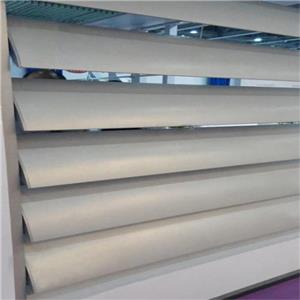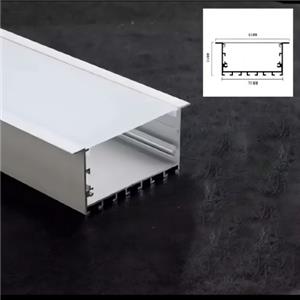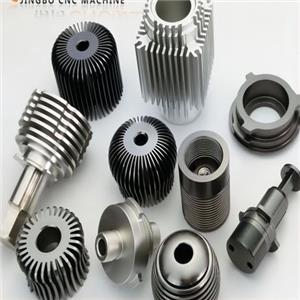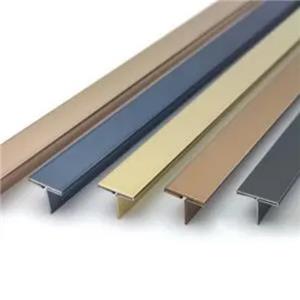How are customized aluminum profiles manufactured?
Step 1:Mold making
Mold making is the first process in the aluminum profile production process. In order to obtain the best surface quality of aluminum profiles, it is very important to make high-quality molds. Use CAD and SOLID WORLD software to make precise mold drawings, and then process the diameter and thickness of the steel billet on the lathe according to the drawings, and process the welding chamber and shunt holes in the machining center. Heat treatment, the mold is heat treated in a vacuum quenching furnace to strengthen the hardness of the mold, the size of the mold hole is processed by wire cutting, and the working belt of the mold is processed by EDM. After the mold is made, the mold is polished. The surface quality of the work belt directly affects the quality of the profile. Only a polished work belt can make the surface of the profile smooth. Then a general inspection of the mold is carried out, and the mold is sent to the extrusion workshop for mold trial. The qualified mold is finally nitrided in a nitriding furnace, and the functional band strength of the processed mold reaches 53-54 degrees. Longer lasting.
Step 2:Casting
Smelting and casting is to smelt and cast aluminum alloy to produce aluminum alloy rods with qualified composition. The first step in smelting and casting is to prepare ingredients and prepare raw materials such as aluminum ingots and master alloys in corresponding proportions. Put the aluminum ingot into the smelting furnace, use natural gas to burn and melt the aluminum ingot, the furnace temperature reaches 800 degrees, stir to make the composition and temperature uniform, and then raise the aluminum liquid to a certain temperature for composition adjustment and refining, and adjust it according to the alloy requirements According to the composition ratio of the aluminum liquid, the aluminum liquid is slag-drained and degassed to improve the quality of the aluminum liquid and the refining is completed. After the molten aluminum has rested for a period of time, the molten aluminum is pumped out and directed to a template for continuous casting to produce aluminum rods of various specifications. The aluminum rod is put into the extrusion furnace to homogenize the composition to eliminate the residual stress of the ingot, improve the processing performance, increase the extrusion speed, and finally complete the production of uniform aluminum rods.
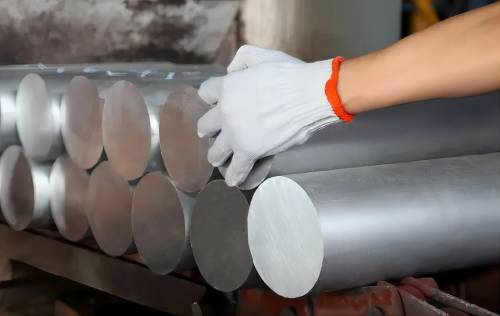
Step 3: Extrude
Extrusion is to produce aluminum alloy rods into profiles required by customers and base materials with the most surface treatment requirements. Heating the aluminum rod, the temperature is between 400-510 degrees, and extruding the profile according to the principle of low temperature, high speed, high temperature and low speed. Through cold bending correction, defects such as bending and twisting of the profile after straightening are eliminated, and orange peel and surface unevenness will not occur. Cut the material into a certain length according to the requirements of the production schedule. After the material is sawed, it is aged in strict accordance with the aging process system to improve the strength of the alloy. Then, the strength and length of the profiles that do not require surface treatment are measured, and then packed into boxes for storage.
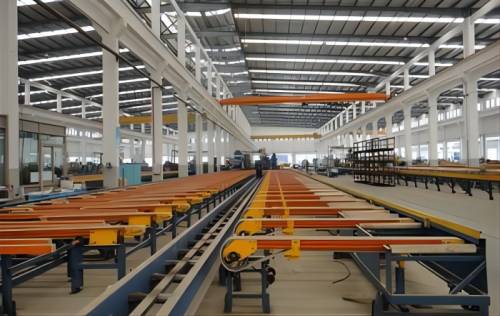
Step 4:Surface treatment
Fluorocarbon Spraying
Fluorocarbon spraying uses electrostatic action to spray polyvinylidene fluoride on the surface of aluminum alloy. The fluorocarbon coating has uniform color, fade resistance and excellent anti-fouling ability. First, the extruded aluminum alloy is placed on the shelf, and then the material is cleaned multiple times in regular layers in the pre-treatment area to thoroughly clean the surface oil stains, and then chromium is carried out in the chromizing tank to form the surface of the aluminum alloy. A layer of chromate film has good high adsorption capacity and can improve the adhesion of paint. The chromium-plated aluminum material is placed in a drying oven for drying. The profile is put on the shelf for the second time. Before spraying, it is partially sanded to ensure that the material is smooth and dust-free before spraying. Two coats and one bake, primer, topcoat; three coats and one bake, primer, topcoat, varnish; four coats and two bakes, primer, isolation paint, drying, topcoat, varnish, painted profile It enters the curing oven for baking, and the finished product is packaged and stored after passing the inspection.
Powder Coating
Powder coating is to spray a layer of powder coating on the surface of aluminum alloy substrate through electrostatic action. The coating has strong adhesion, weather resistance, Bono resistance and UV resistance. First, clean the surface of the aluminum substrate in the pretreatment area and then perform chrome plating. Put the chromed aluminum material into a chrome plating furnace to dry, then enter the spraying area for powder coating, and perform powder coating at 200 degrees. Cured, dried and removed from the shelves, packed into warehouse after passing inspection.
Anodizing
Aluminum alloy is electrolyzed during anodization, and an aluminum oxide film will form on its surface. Oxidized aluminum alloys are electrolytically colored to produce a variety of colors. Place the extruded aluminum profiles on the conductive frame and clean the aluminum profiles in the pretreatment area as required. After thoroughly cleaning the surface of oil and dirt, the aluminum profile is placed in the electrolyte and its spotting solution is used to form aluminum oxide on the surface. Films and oxidized profiles that require electrolytic coloring can be electrolytically colored. As time goes by, the color changes from light to dark, and various colors can be produced. The oxide film is then sealed and the aluminum profiles are dried and tested.
Electrophoresis
Electrophoresis is based on the oxide film, and a water-soluble acrylic paint film is covered on the oxide film through electrophoresis. The profile has stronger weather resistance and corrosion resistance, making its surface smooth and beautiful. Place the aluminum profile on a vertical conductive frame and clean the materials in the pretreatment area multiple times. After the oil stains are thoroughly cleaned, the aluminum profiles are electrolyzed in an electrolyte solution to form an aluminum oxide film on the surface. In electrolytic coloring, the profile is put into the battery, and the oxide film is covered with a water-soluble acrylic paint film through electrophoresis, and then enters the curing oven to form a film at a temperature of 180 degrees.
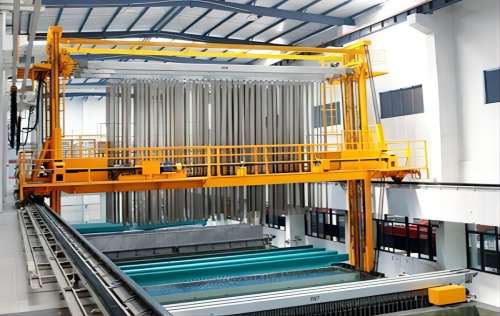
Finally, if you are interested in about aluminum information, welcome to click this link:

